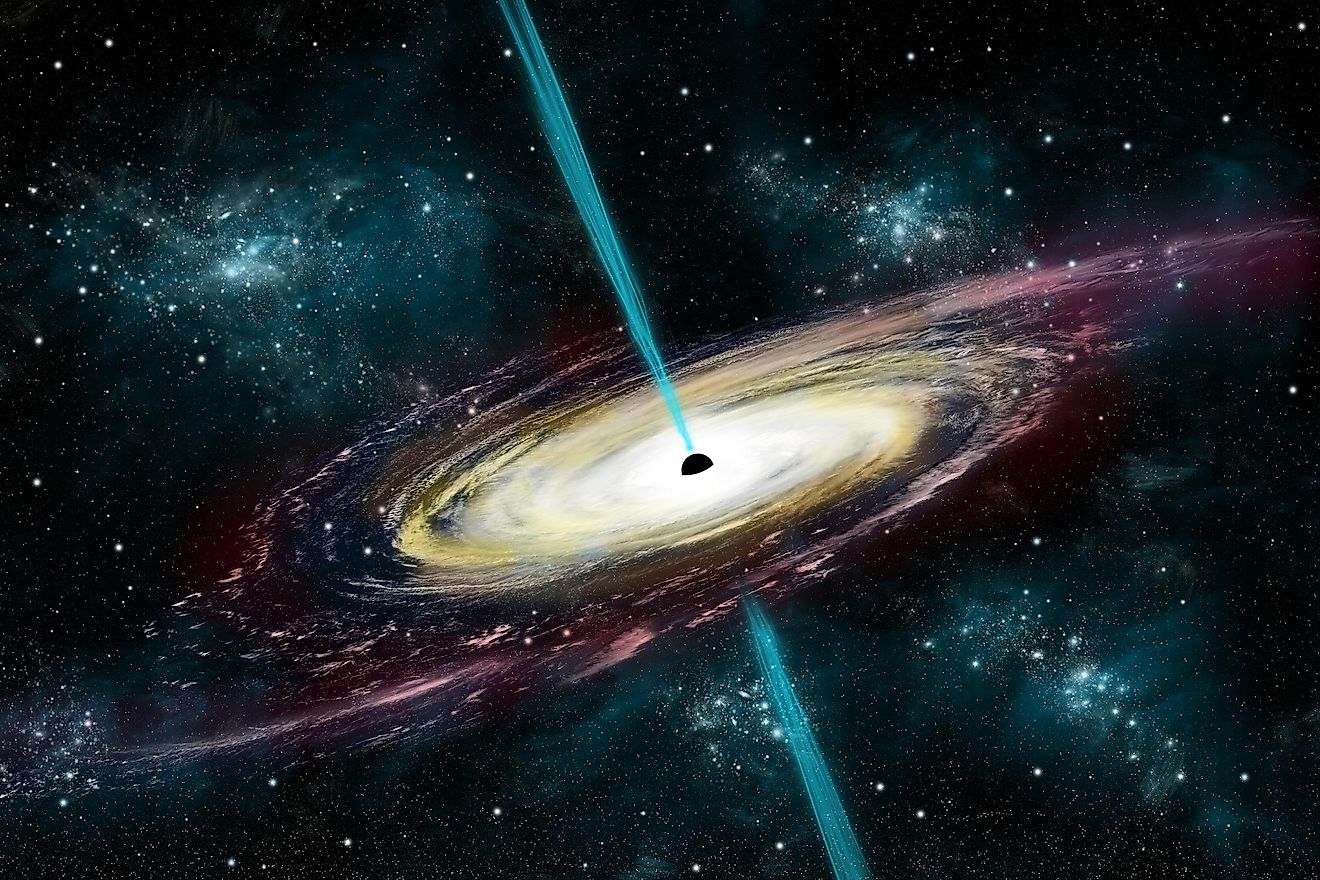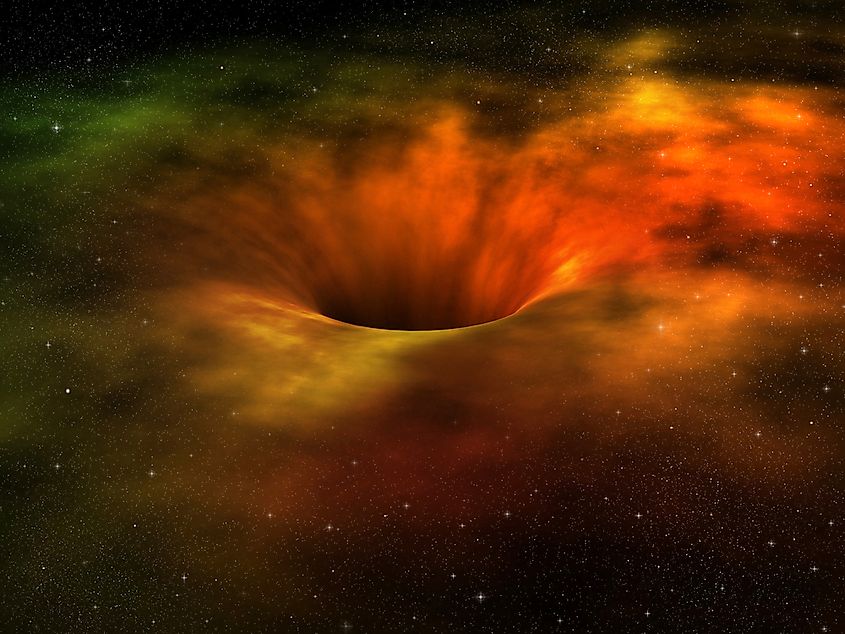What Is An Event Horizon?

In plain language, an event horizon can be described as a point of no return. It is a cosmical prison that not even the light itself can ever escape, a threshold beyond which no events can affect the observer. To understand more details about the way the event horizon is conceptualized, we need to talk in the context of astrophysics, namely the theory of general relativity and black holes, with whom the concept of the event horizon is closely associated.
The Point Of No Return
The event horizon is a part of a black hole, it can be conceptualized as an outer ring that surrounds the black hole, and if a particular object goes past that outer ring, it can never again return. It will have the appearance of being "stuck" to the eyes of an observer. How exactly does Albert Einstein's theory of relativity play a part in this? The laws of general relativity state that the gravitational pulls of black holes are so strong no object can escape it.

As claimed by Einstein, there is nothing that can travel faster than the speed of light. As soon as something enters that ring around the black hole that we call the event horizon, the necessary speed velocity for escape starts surpassing the speed of light. But if the speed of light is the fastest, how is an escape possible? It's not, that's why we call it the point of no return. The closer someone or something approaches to the center of the black hole, so does the speed required to escape gets exponentially greater.
Because the event horizon is actually an entry point at which escape velocity becomes bigger than the speed of light, it is safe to say that it is impossible to get out of. We can't witness any event that happens inside the borders of the event horizon, and as we said, nothing can escape it. The center of that place i.e. the black hole is also called a singularity. Singularity is where the black hole's mass is concentrated, with infinite density. Abraham Loeb, the chair of astronomy at Harvard University, accurately described the event horizon as "...the ultimate prison wall - one can get in but never get out."
What Is a Quasar?
If we look at our own solar system's galaxy, Milky Way, there is a black hole at the center of it that has a mass that equals to that of 250,0000 suns, and it's event horizon spans in many millions of kilometers. Theoretically, it is even possible for the Sun to become a black hole if its mass was less than the radius of the event horizon around it. It is important to notice that no one actually ever saw a black hole. Still, nonetheless, physicists are convinced in their existence.
The only thing that we actually can see is what is called an accretion disk. It is a disk-shaped flow of various space materials like gas and dust, which came close enough to the black hole but far enough to not fall into it. These halo-like matters surrounding the black hole are also called quasars, a neologism made up of "quasi-stellar radio source. " It is called like that because quasars were first discovered as radio-sources. They are also one of the oldest bodies in the universe, as well as the furthest and brightest of objects we can see.











